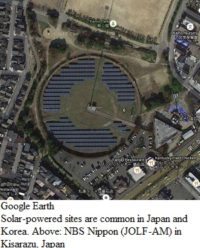Sponsored by: TCI Business Capital
It seems the idea of green energy has infiltrated the marketing pitches of companies across several different industries. But perhaps the industry one would least expect to be “green” is the tower industry. Cell phones and wireless antennas are seemingly contradictory to a movement that prioritizes nature and Earth’s natural resources.
Panasonic’s new “Green Tower” is challenging such thinking.
Last year, at the 2015 Mobile World Congress, Panasonic demonstrated the Green Tower which is run by a solar-powered, energy-storing system. By harnessing renewable energy, Panasonic estimates telecom companies can greatly reduce operating costs; the company estimates telecom companies spend 15 to 50% of operating cost on the energy needed to run cell tower.
Panasonic is offering the Green Tower as a service to telecom companies. This includes the installation, management and maintenance of the cell tower, all of which the tower operator contracts out to Panasonic for a given length of time.
Proponents of the Green Tower system cite India as an example of the technology’s success. In 2010, the country set the lofty goal of having 75% of its rural towers operating on renewable energy and 33% of its urban towers, according to an article published on SolarEnergy.net.
Katherine Tweed of Scientific American predicted in 2013 that the technology would prove more cost effective to operators than typical energy sources, writing that the upfront cost may be higher but its an investment that will eventually pay off:
“Solar installations with battery backups are more expensive to install upfront, but the yearly operational expenditure is far lower, recouping the investment in about two to four years. The current annual cost to run a diesel generator for a base station is about $14,510 in India, compared with $8,215 for solar with battery backup. By 2020, the annual cost of using diesel is expected to be more than $20,000 whereas the cost of solar and batteries will likely fall to less than $5,500.”
By Benjamin Horvath





Reader Interactions